
Federschwert - German training sword

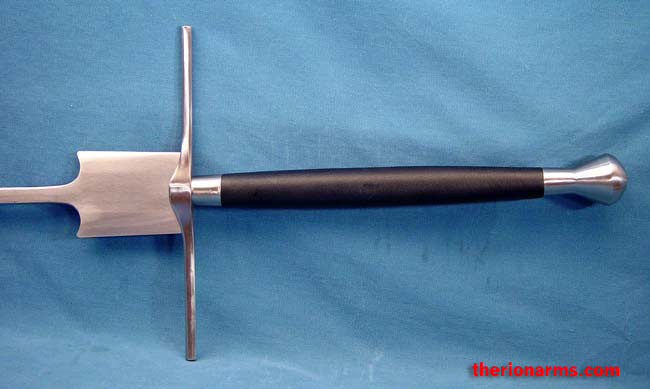

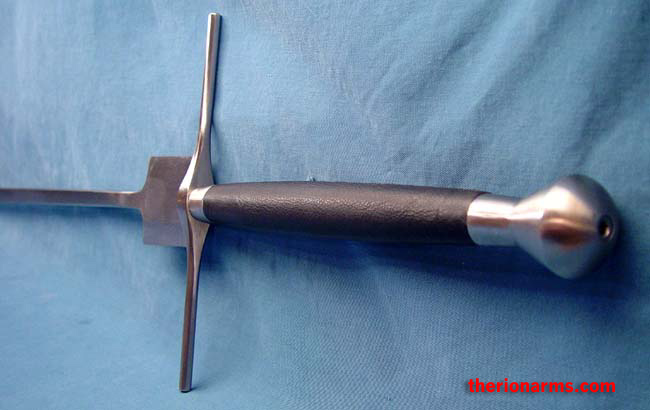
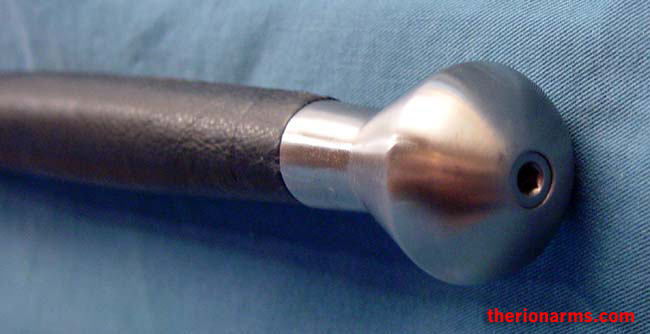
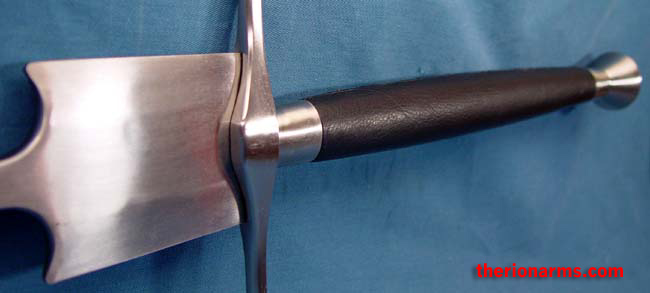

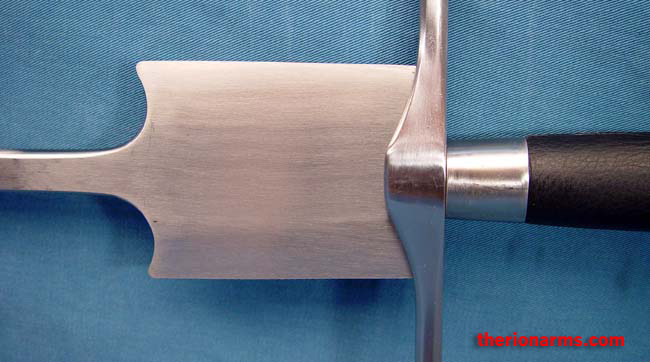


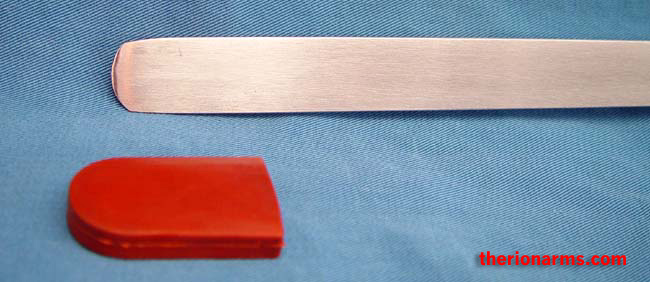
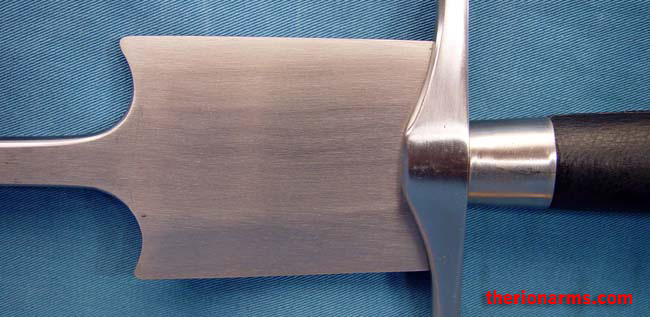
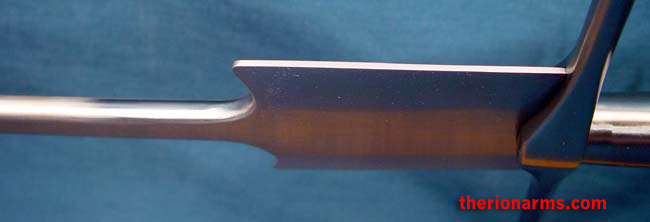





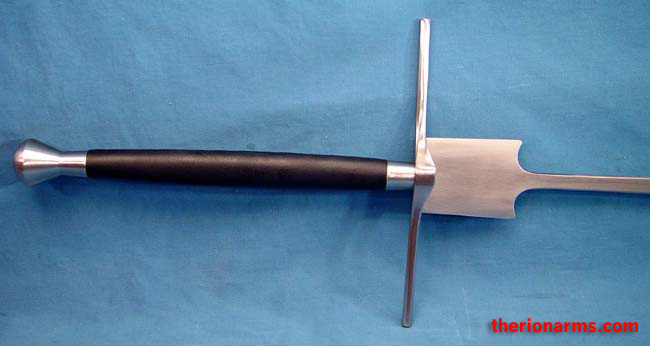
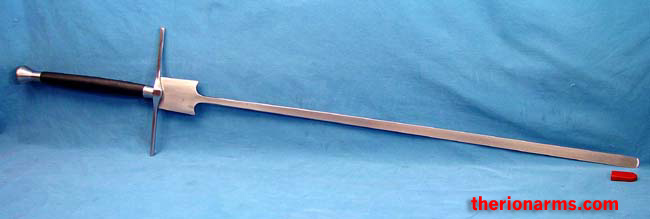


Yup - I'll agree with you, this is one strange looking sword. However, it is an accurate reproduction of German training swords from the late 1500's. There are several originals in the Landesmuseum in Zurich, Switzerland. This style training sword is most famously illustrated in Joachim Meyer's fechtbuch 1570 and 1600 editions. These swords were a primary training and bouting tool for the Marxbruder and Federfechter fechtschule (fight school) guilds. Meyer is based in the Liechtenauer tradition, but his methodology has a schulfechten (school-fighting / sport-fighting) don't-kill-your-students attitude in addition to the deadly combat skills developed by Liechtenauer and Ringeck.
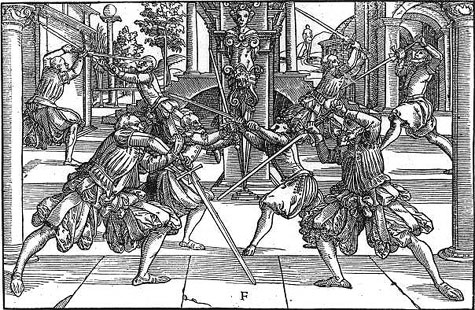
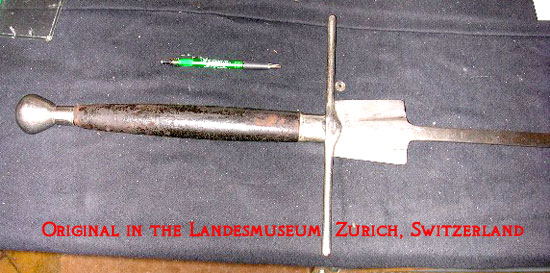
Anyway, back to this sword - it is an accurate recreation intended for (reasonably) safe training and bouting in schulfechten styles. The strange blade shape is the historical solution to the problem of how to make a practice/training sword with blunt edges and still keep the sword light and fast. The solution: make the blade narrower and thicker, and make the forte of the blade wider to both balance the sword and make it stronger at the hilt. (The extra wide forte of this blade is properly called the schilt - this is, after all, a German design, not French.) Narrow the blade and widen the schilt, and this is what you get. The first 2/3rds of the blade is relatively stiff, the last 1/3rd relatively flexible - this gives good control in the bind, but a bit more safety in the thrust. The blade is 5mm thick for most of it's length, then it starts thinning at 18" from the tip. At 12" from the tip it is 2mm thick, at 6" from the tip it is 1mm thick, and continues at 1mm thickness to the end of the blade. The very tip is rounded and covered with a removeable rubber tip for safety. (sidenote - these are still steel *swords*, not padded boffer sword-like-objects. Treat them as you would any other sword and don't do something stupid with them. Wear protection when training and bouting). The grips are leather wrapped wood, the guard and pommel are stainless steel, the blade is tempered high-carbon steel. The entire sword can be disassembled for cleaning and maintenance via the 5mm allen nut that secures the pommel.
This is the second generation of Federschwert created by Hanwei. The new federschwert are a big improvement over the first generation, particularly in the way the blade edges are more rounded and the blades are not as floppy. Having the "wings" of the schilt rounded off is a very good thing, too, as on the first version those were sharp. Having the pommel mounted with a nut for easy maintenance like the Tinker line of swords is also a big plus. The only thing I think was better in the first generation than in the second was the tip - the first ones actually got thicker at the tip, with the very end being around 3mm. The new ones have 1mm thick tips. The inclusion of the rubber end cap on the new federschwert is nice, but I think having the thickened tip was better. Note that this style of training sword was after the days of heavy full armor, and training with them was done in every-day clothing rather than armor or gambesons/jacks.
These swords are *excellent* for SCA cut and thrust.
length: 51 1/2"
blade: 37 1/2" overall
schilt (forte): 3 1/4" x 2 3/4"
blade width above schilt: 1/2"
blade thickness above schilt: 1/4"
blade width near tip: 7/8"
blade thickness near tip: 1mm
grip and pommel: 13 1/2"
guard: 10 3/4"
balance point: right at the end of the schilt
weight: 3 lb 1.0 oz

Discontinued and sold out